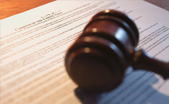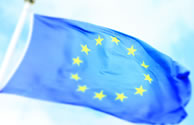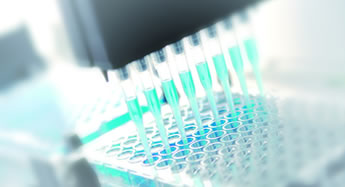Medical devices law – new provisions concerning notified bodies
October 2013
The European Commission published on 24 September the Implementing Regulation (EU) No 920/2013 on the designation and the supervision of notified bodies under the Council Directive 90/385/EEC on active implantable medical devices and the Council Directive 93/42/EEC on medical devices1. On the same day, the Commission also published a Recommendation on the audits and assessments performed by notified bodies in the field of medical devices2.
The Commission‘s initiatives
 The provisions proposed by the Commission in its Regulation3 target better supervision of the accreditation bodies, and in particular of the notified bodies to be monitored by them, in the pursuit of their activities, the standardisation of examination standards, and an improved exchange of information between the competent agencies and authorities at both the national and EU level in consultation with the Commission.
The provisions proposed by the Commission in its Regulation3 target better supervision of the accreditation bodies, and in particular of the notified bodies to be monitored by them, in the pursuit of their activities, the standardisation of examination standards, and an improved exchange of information between the competent agencies and authorities at both the national and EU level in consultation with the Commission.
The Commission also proposes recommendations to the notified bodies on performing conformity assessment procedures. The measures are intended to improve supervisory and safety standards in the examination and monitoring of medical devices. They are also meant to create the transparency required to further develop safety standards on the basis of the findings and experiences at the Community level, and to ensure EU-wide uniform implementation.
Content of the Commission’s drafts
Regulation
The new provisions define the criteria to be met by the notified bodies responsible for supervising the manufacturer of medical devices. In summary, the more stringent requirements proposed are as follows:
- A Member State shall not appoint a notified body until after a “joint assessment” by experts from the Commission and the Member States. Hence, the designating authority of the Member State where the conformity assessment body is established shall involve representatives of the designating authorities from two other Member States as well as a Commission representative in the procedure for appointing notified bodies. Said body, together with the representatives consulted, shall produce within 45 days after the on-site assessment an assessment report containing, among other things, a recommendation with regard to the designation. The assessment reports shall be made available to all other Member States. The assessment reports of the consulted representatives of other designating authorities, as well as any further comments by designating authorities, by competent agencies of other Member States and by the Commission, are merely recommendations and are not binding. Nevertheless, it is anticipated that the deciding authority will have difficulty ignoring negative comments without good reason.
 The Member States will monitor and audit the notified bodies at regular intervals (performing file reviews, on-site assessments and audits) to ensure that they fully comply with the requirements. If this is not the case, the Member State shall withdraw its designation of the body.
The Member States will monitor and audit the notified bodies at regular intervals (performing file reviews, on-site assessments and audits) to ensure that they fully comply with the requirements. If this is not the case, the Member State shall withdraw its designation of the body. - The requirements of Member States on the skills and competence of the personnel of notified bodies are explained.
- The notified bodies will perform unannounced, random internal audits checking relevant samples. If the notified body fails to check random samples, its designation will be suspended or withdrawn.
Commission Recommendation
The Recommendation is intended to ensure the proper monitoring by the notified bodies of the manufacturer’s compliance with legal requirements. The Recommendation does not give rise to new rights or duties. By providing general guidelines for assessments and unannounced audits, the work of the notified bodies, as well as the Member States’ evaluation thereof, is to be facilitated.
The Recommendation contains detailed instructions under the following headings:
- Annex I: Product assessment;
- Annex II: Quality system assessment;
- Annex III: Unannounced audits.
Since the notified bodies do not have the powers of a public authority, the relevant details will be stipulated in the agreements entered into by the notified bodies with the medical device manufacturers seeking product certifications.
Significance of the new regulations and outlook
 The measures proposed by the European Commission are to serve for the improvement of the safety of medical devices. The Commission thus intends to fulfil its obligation to re-establish patient confidence in the medical devices sector, which had been lost to a significant degree as a result of the breast implant scandal and other events. The Commission emphasises at the same time that the ultimate goal is the adoption of its proposals for a Medical Devices Regulation4 and for an In Vitro Diagnostics Regulation5 and that it is important to procure, both in the Parliament and in the Council, that the ongoing revision can be finalised by the beginning of next year.
The measures proposed by the European Commission are to serve for the improvement of the safety of medical devices. The Commission thus intends to fulfil its obligation to re-establish patient confidence in the medical devices sector, which had been lost to a significant degree as a result of the breast implant scandal and other events. The Commission emphasises at the same time that the ultimate goal is the adoption of its proposals for a Medical Devices Regulation4 and for an In Vitro Diagnostics Regulation5 and that it is important to procure, both in the Parliament and in the Council, that the ongoing revision can be finalised by the beginning of next year.
Already, one can expect that the recent measures by the Commission will have major repercussions on the relations between the notified bodies and the manufacturers of medical devices. In particular in view of the anticipated legislative changes, the notified bodies will have to align their examination and surveillance procedures to the new regulations. Market participants should prepare for that.
If you have any questions on this article or would like to propose a subject to be addressed by Synapse please contact us.
1 Commission Implementing Regulation (EU) No 920/2013
3 In part anticipating the Medical Devices Regulation currently in the making, which is to revise essential portions of Community law pertaining to the marketing and monitoring of medical devices.


Wolfgang Rehmann
Wolfgang is a partner in the Pharmaceutical & Patents group based in our Munich office.
"One can expect that the recent measures by the Commission will have major repercussions on the relations between the notified bodies and the manufacturers of medical devices."

